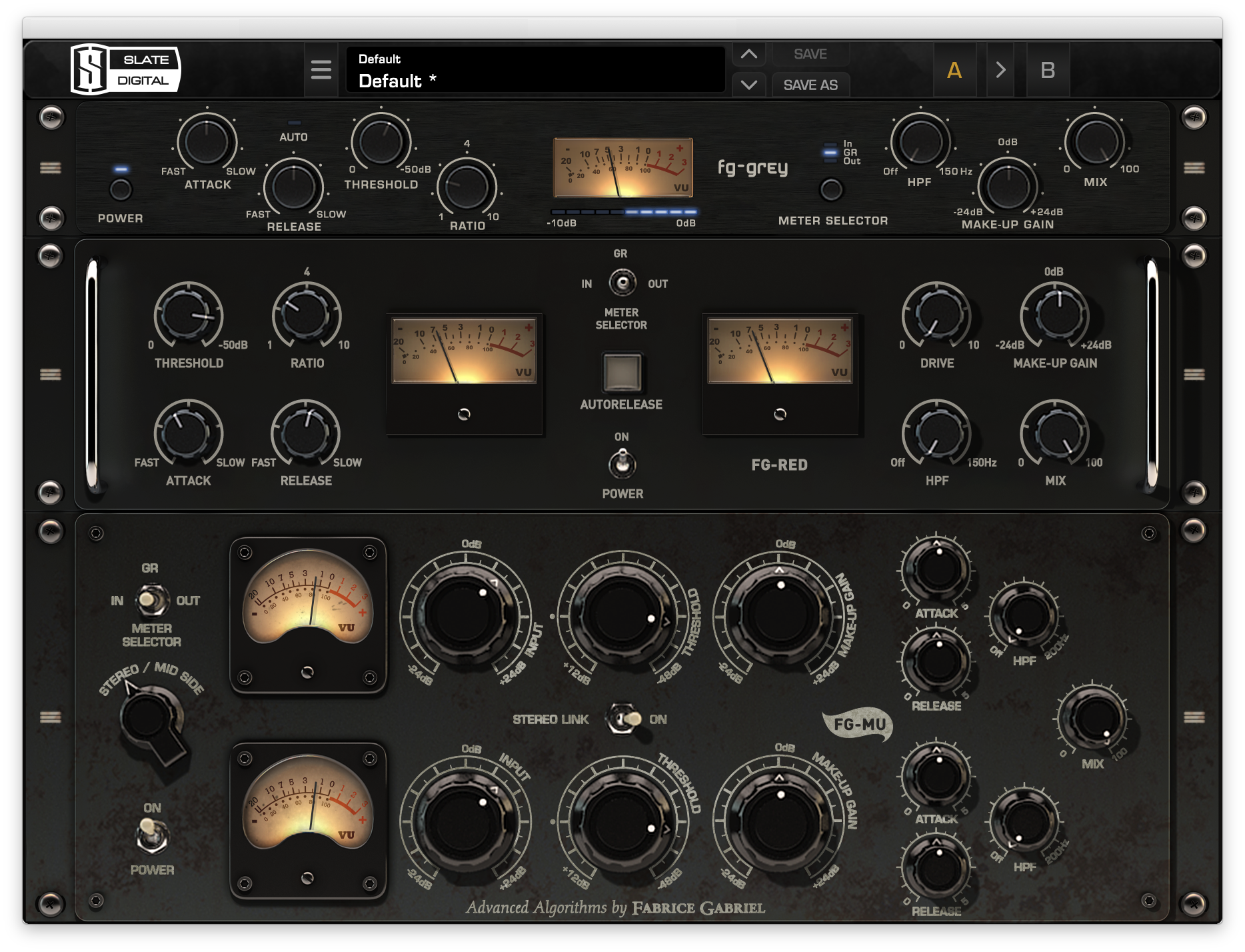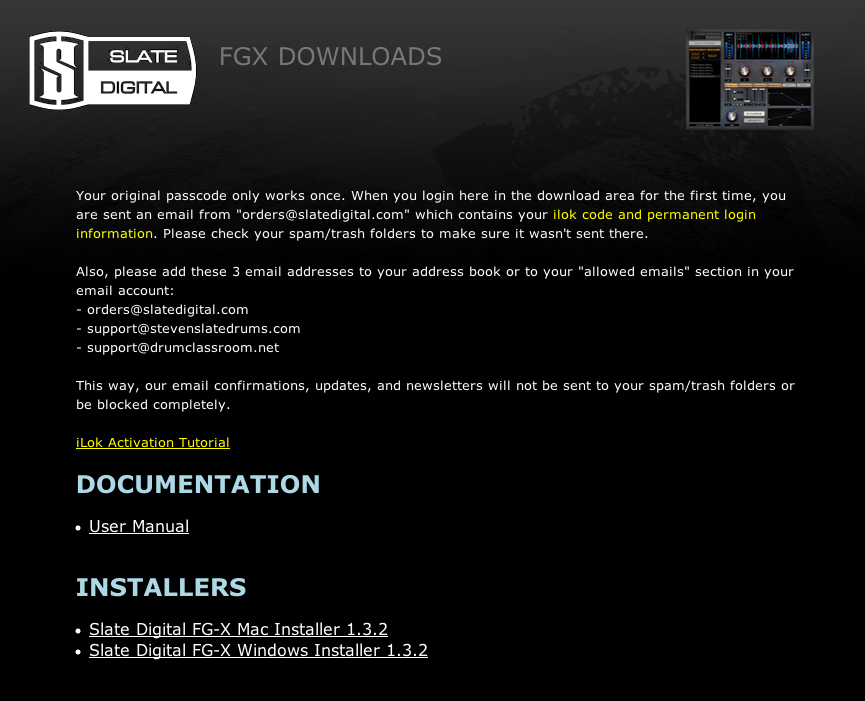

Constant Gain Monitoring, as the name suggests, level‑matches the output of FGX with the dry signal, enabling accurate A/B comparisons, so you can hear exactly what the processing is doing to your signal. This, however, is joined by some rather less familiar functions, one of the most valuable of which is accessed by a small push‑putton just next to the Gain control. As on a typical peak limiter, the main control is a simple Gain knob.

Nice though it is, most users will view the FG Comp section as an hors d'oeuvre for the main course: the FG Level processor. Not only can you switch the compressor's VU meter to show input, output or gain reduction, for example, but you can also separately set the range of values and needle ballistics in each case. This is perhaps a good time to mention another consistent highlight of FGX: excellent and highly configurable metering.

So if, for instance, you want finer control over the Ratio setting and only ever use low compression ratios, you can have the dial run from 1:1 to 5:1 or 10:1 instead of the default 20:1. There are no surprises in the parameter set, but one feature that's not immediately apparent is its ability to act as an auto‑leveller: with slow attack and release times, it won't affect the dynamics within a verse or chorus, but will invisibly balance levels on a song‑wide scale.Ī nice touch is that almost everything is configurable through a pop‑up window. This is not intended as a 'character' device, but is designed to be as transparent as possible, and I think few would disagree that it meets this goal. A Two‑stage ProcessįGX is designed as a complete mastering dynamics processor, so the first stage of processing that your signal encounters is a conventional compressor.
Slate fgx vs fgmu Pc#
FGX was developed in conjunction with Fabrice Gabriel, the man behind Eiosis's superb E2 Transienter, who clearly knows a thing or two about dynamics processing! It's authorised to an iLok key, and is available on Mac and PC in all the usual plug‑in formats.

Called Intelligent Transient Preservation, or ITP, it is claimed to let the user raise the average level of the mix - in other words, make it louder - without reducing the impact and liveliness of transients within it. The main selling point of Slate Digital's FGX mastering processor is a new approach to the second part of the process. Traditionally, one would use a peak limiter (in other words, a compressor with a very fast attack and release, and an infinite ratio setting) some engineers find it more forgiving to apply other forms of signal distortion such as tape‑style saturation, or simply to clip the input of an A‑D converter, but there is always a trade‑off between sound quality and the degree by which transients can be attenuated. The former are usually tackled using a conventional compressor, while there are various approaches to dealing with transients. Making a mix louder usually involves both ironing out 'macro', or medium‑ to large‑scale dynamic contrasts - such as the gulf in level between a quiet verse and a busy chorus, or between a loud snare hit and the space after it - and taming 'micro‑dynamics', the momentary peaks that are often known as transients. Like it or not, we have to make our masters loud and, that being the case, we might as well do so in the way that causes least possible damage. But at the end of the day, we have to pay the bills, and it's a rare client who is happy to have his or her master half as loud as commercial releases in the same genre. We can point out until we're blue in the face that quieter mixes might actually sound better on the radio. We can complain about the loss of those dynamic contrasts we put so much effort into capturing in the first place. And for audio engineers, making mixes loud looms high on this list. There are some activities, like unblocking toilets or telling the children the cat has died, that everyone has to do, even though no‑one much likes doing them. The idea that loud digital masters can retain real dynamics seems like a contradiction in terms, but it's exactly what Slate Digital are claiming for their new mastering plug‑in.


 0 kommentar(er)
0 kommentar(er)
